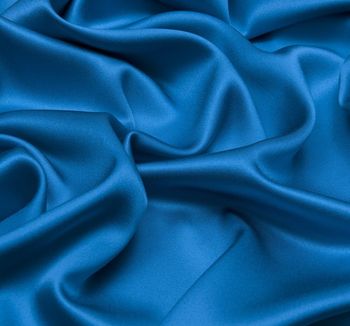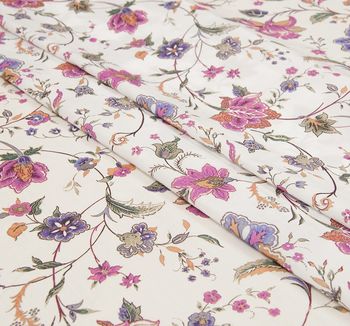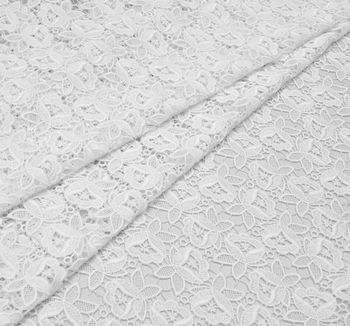Silk is a timelessly trendy natural fabric woven from the cocoons of silk worms. The world’s most famous fashion brands regularly apply it for various men’s and women’s outfits earning the admiration of the audience.
Satin Fabric. All You Need to Know About
Satin is a type of weave featuring a remarkably smooth and glossy face side. Most often created out of silk, silk satin fabric is renowned as the first choice for evening dresses. Let’s take a look at this beautiful and seductive fabric and see what it has to offer.
This fabric comes in a range of different weights and has a smooth and lustrous surface that is very attractive. This weave originated over 2,000 years ago in the Chinese port of Quanzhou and eventually spread from Asia to the west.
Historically, satin was used for upholstery — for example, Louis XIV used it to cover his ornate furniture in the Palace of Versailles. These days it is commonly used for evening gowns, lingerie, boxer shorts, ballet shoes, hats, ties and bedding. Coat lining fabrics are also often made from satin, as the smooth surface allows the coat to glide easily over the fabrics beneath it.
What Exactly is Satin Fabric?
There is some confusion over the difference between satin and silk. What you need to know is that satin is a type of weave and not a raw material, unlike silk which is produced by silkworms. So, silk can be used to make satin.
The name satin refers to a type of weave, which is constructed by floating warp yarns across the weft before going beneath one weft thread and starting the cycle again. This weave has fewer interlaces, and it creates the smooth and lustrous surface that everyone knows and loves. It is shining because the light reflecting is not scattered by the fibres: they are even and lying or “floating” on top of the weave.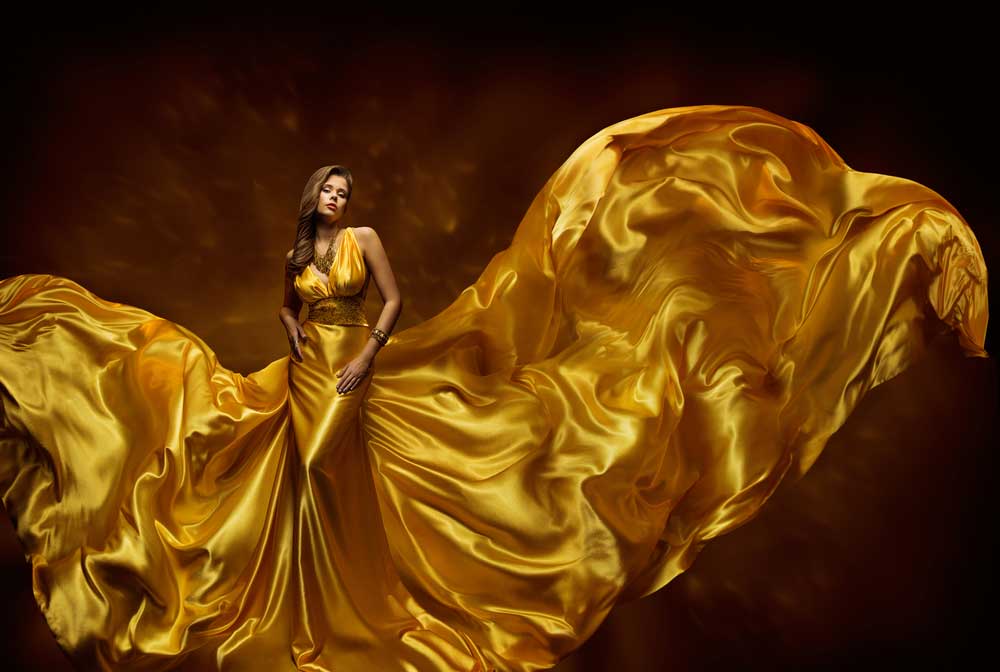
Some fabric purists insist that satin fabric can only be made from silk. Originally, this was the case when the process originated in China.
Typical Characteristics
Satin fabric can be made of natural and synthetic fibers, so it varies in quality. Still, there are some characteristics common for all satin types. What are they?
- Satin typically has one side that is glossy and one side that is dull.
- The fabric is smooth and falls dramatically, making it look luxurious and seductive when worn in the form of a gown.
- Satin weaves are flexible and are able to be formed around compound curves.
- People with long hair like satin sheets because their hair is less likely to tangle while sleeping — the hair strands simply “glide over” the fabric rather than creating friction as they would with cotton.
- Satin that is made from pure silk is hypoallergenic and very breathable.
Types
Back in the day, satin fabric was reserved for royalty and nobility. Times changed, and today everybody can wear it, but the fabric has the same character: it is luscious and noble, and it still represents luxury.
There are several types of satin fabric you can use to create dresses, skirts and more. Below are some of the most well known:
|
Variety |
Properties |
Uses |
|---|---|---|
|
Antique Satin, also known as Satin Back Shantung |
A heavy, dull fabric with a textured surface, because it is woven with slubbed yarns |
Upholstery, curtains, draperies, bedding, accessories |
|
Charmeuse Satin |
A lightweight fabric with a very shiny face, quite clingy |
Clothing, wedding and bridesmaid dresses |
|
Crepe Back Satin |
A reversible fabric with a satin face and a crepe back |
Dressmaking, lingerie |
|
Duchesse Satin, also known as Duchess |
A heavy satin fabric with an outstanding ability to maintain shape, quite dull |
Dressmaking, bridal wear |
|
Double Faced Satin |
A mid-weight satin fabric with a glossy surface on both sides, reversible |
Clothing, wedding gowns, lingerie |
|
Stretch Satin |
A satin fabric with a little amount of elastane, lycra or spandex, which gives it some stretch |
Form-fitting clothing, lingerie, bridal wear |
This table includes the most popular satins you can find almost in any fabric shop. However, there are also less known varieties such as slipper satin, faconne satin, farmer’s satin, etc. Plus, satin fabric can be made from silk, polyester, cotton, acetate and many other fibers, which would eventually affect the appearance and texture of the cloth.
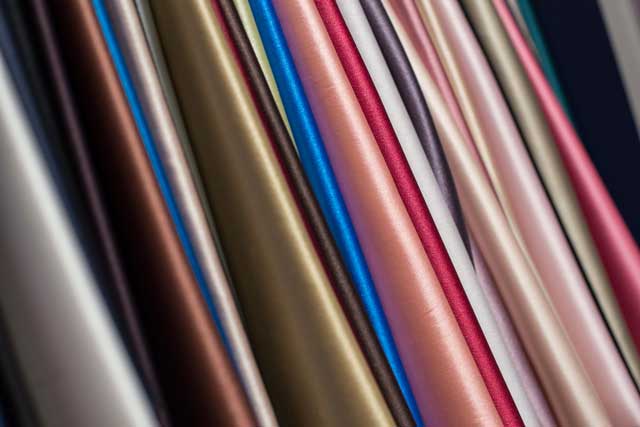
Difference Between Satin and Sateen
Are satin and sateen synonyms? You may say so. The two fabrics look similar, though sateen tends to have a little less sheen. What is the difference between them?
- Weave
Satin is made in satin weave, and sateen is made in sateen weave. Most people don’t see any difference, but a professional tailor will tell right away which one is which.
- Fibre
Sateen is made from 100% short staple cotton. Satin can be made from silk, polyester, nylon, etc. In other words, if the satin fabric you’re holding in your hands is woven from cotton, you’re holding sateen.
Both fabrics are used to design garments, from dresses and jackets to trousers, skirts, shorts and lingerie. You may also find them in upholstery and bedding. However, cotton sateen is a tougher and more durable material, so it would be most suitable for the projects that imply constant use, such as everyday wear and bed linen.
Pros and Cons
|
Pros |
Cons |
|---|---|
|
It is a very versatile fabric. |
It can be difficult to sew with, as it is glossy and can slip around in the sewing machine. |
|
The fabric feels soft and silky on the skin, making it a popular choice for bed sheets. |
It requires special treatment and cannot just be thrown in the washing machine. |
|
Satin made from pure silk is 100% natural and hypoallergenic. |
It is not shiny on both sides — there is a glossy side and a dull side. This could limit the designs it is used in. |
Why is It Better?
Silk satin fabric is a perfect choice for almost any item in a woman’s closet. From underwear and lingerie to office blouses and cocktail dresses, it unfolds its charm and holds you captive from the moment you put it on. Satin made of pure silk feels like heaven, and looks like one! What makes it so adorable?
- Silk satin is hypoallergenic
- It is very breathable
- It is absorbent
- It has a pleasant lustre
- Silk satin does not attract static electricity
Silk satin is more expensive than synthetic satin. And while synthetic fibers are not that bad, here are some things to consider when it comes to choosing the best satin fabric for your projects:
- Synthetic satin does not breathe well
- Polyester satin tends to be too shiny
- Most synthetic satins are slippery
- Such satin fabric can get quite hot and cling a lot
Synthetic satins are less expensive. They are durable and offer the maximum shine, which is a great quality if you’re aiming to generate buzz. Still, natural silk satin does not irritate skin and feels gorgeous to the touch, and that is why it is often preferred over polyester and nylon satins.
End Uses
Satin fabric is one of the best choices for luxury wear. With this fabric, you don’t have to go all out with your design, embroidering it with myriads of crystals or sequins. Your dress may have a very simple cut, but if made in satin it’ll look expensive and elegant. Satin is ideal for making:
- Evening gowns
- Wedding dresses
- Corsets
- Skirts
- Blouses
- Shirts
- Loungewear
- Lingerie
- Underwear
- Inner lining
Satin is a hot favourite in dressmaking, but there are lots of ways one can use it to create stylish and sophisticated pieces. Think about
- Neckties
- Hats
- Ballet shoes
- Athletic shorts
- Gloves
- Neckbands
- Sashes
- Scarves
- Brooches
- Purses
Satin ribbons will add a touch of luxury to any design, whether it’s a dress, a hat or a pillow cover. Which brings us to another way of using satin: bed sheets, lightweight upholstery, interior finishing and luxurious handkerchiefs.
.jpg)
Dress Styles
Dresses are the number-one items usually made with satin. Satin dresses are versatile: you can wear them to office parties, birthday celebrations, proms, weddings, or just when you are in a mood to put one on. Here is a quick list of dress styles one can sew of satin:
- a little black dress, aka LBD
- a sheath dress
- a slip dress
- a H-line dress
- a tea dress
- a shirt dress
- a wrap dress
- a skater dress
Satin dresses come in various lengths, from flirty mini to gorgeous maxi, and in a range of silhouettes. Stretch satin fabrics allow us to create body-hugging designs, which look stunning on flawless figures. One can play a lot with details, such as neckline, hem, waist, or sleeves.
Black and red satin dresses are considered classic, while white and ivory satin fabrics are mostly associated with brides. These boundaries are easily shifted, and every woman can change the rules and go for a color she likes best. Who’s to say you can’t wear a pink satin dress to your wedding?
Silver and gold satin dresses are great for parties, gala events, visits to museums and art galleries. These colors demand attention, but they are not overpowering. Plus, one can easily dress down the look by combining it with black fabric.
Satin Fabric for Bridal Wear
A few words about bridal fashion in 2019.
- Silk satin is among the most popular textures in wedding dresses, together with organza, chiffon and tulle.
- Silk satin can be used for capes, capelets, wedding jackets.
- Princess capes are all the rage in 2019. You can go with see-through fabrics like tulle or chiffon, but make sure you hold it together with a satin ribbon.
- Satin fabric is a great option to pair with embroidered tulle and lace.
- Satin ribbons put an emphasis on a bride’s waist, either in a matching or contrasting color.
- Silk satin is perfect for bridal accessories, such as gloves, purses or shoulder bows.
- Detachable satin sleeves can accompany your strapless dress.
Modern brides get to choose between solid, jacquard and embroidered satin. The trendy color palette is centered around white, ivory, pink and nude. Dresses are no longer a must, by the way! Many fashion designers offer wedding jumpsuits and pants, and if you are the brave bride, consider making them with satin!
Care Tips
Satin fabric is luxury, which means it needs royal treatment. Below are some tips to help you increase the life of your satin garments.
- Dry-cleaning is the preferred method of caring for all types of satin, though synthetic ones can be hand-washed at home.
- Most satin items can be ironed. Press them inside out on low heat. It’s always better to use some kind of protection, like a piece of cotton fabric you can buy online at Tissura, or a special iron shoe.
- Water spray can leave spots on satin fabric, so avoid it when ironing.
- Satin garments should not be wrung. Instead, let them dry on a hanger, away from sun.
- Embroidered satin fabric is a treasure, especially if it includes sequins, beads and crystals. Such fabrics should be cared for with utmost attention. Turn to professionals not to damage the embroidered pattern.
If you are after a high quality satin fabric, get yourself some silk! It should be dry-cleaned only, just like all silk materials that are rarely washed.
Tissura Collection
At Tissura online store, you can buy silk satin fabrics from Europe's leading manufacturers, such as Belinac, Taroni, Carnet, Etro, Jakob Schlaepfer and Ruffo Coli. Some of the most luxury ones are placed below. Click on the fabric you like and get to the product page to see more information about each one. To enjoy the whole collection of satin fabrics at Tissura, click on the corresponding button underneath:
Stretch silk satin fabric, 83 € (103 US$) per one running metre;
Stretch silk satin fabric, 83 € (103 US$) per one running metre;
Silk satin fabric, 54 € (67 US$) per one running metre;
Double faced silk satin fabric, 115 € (186 US$) per one running metre
How to stay cool on a hot summer day? Wear fabrics built for the heat. Cotton, linen, viscose, silk – there are dozens of summer-friendly materials you can choose for your wardrobe. The best fabric to opt for when the temperature rises should be breathable and comfortable.
The wedding dress is one of the most important clothing items a woman gets to choose in her lifetime. It can be made of silk or cotton, lace or tulle, be strewn with sequins or embroidered with beads.
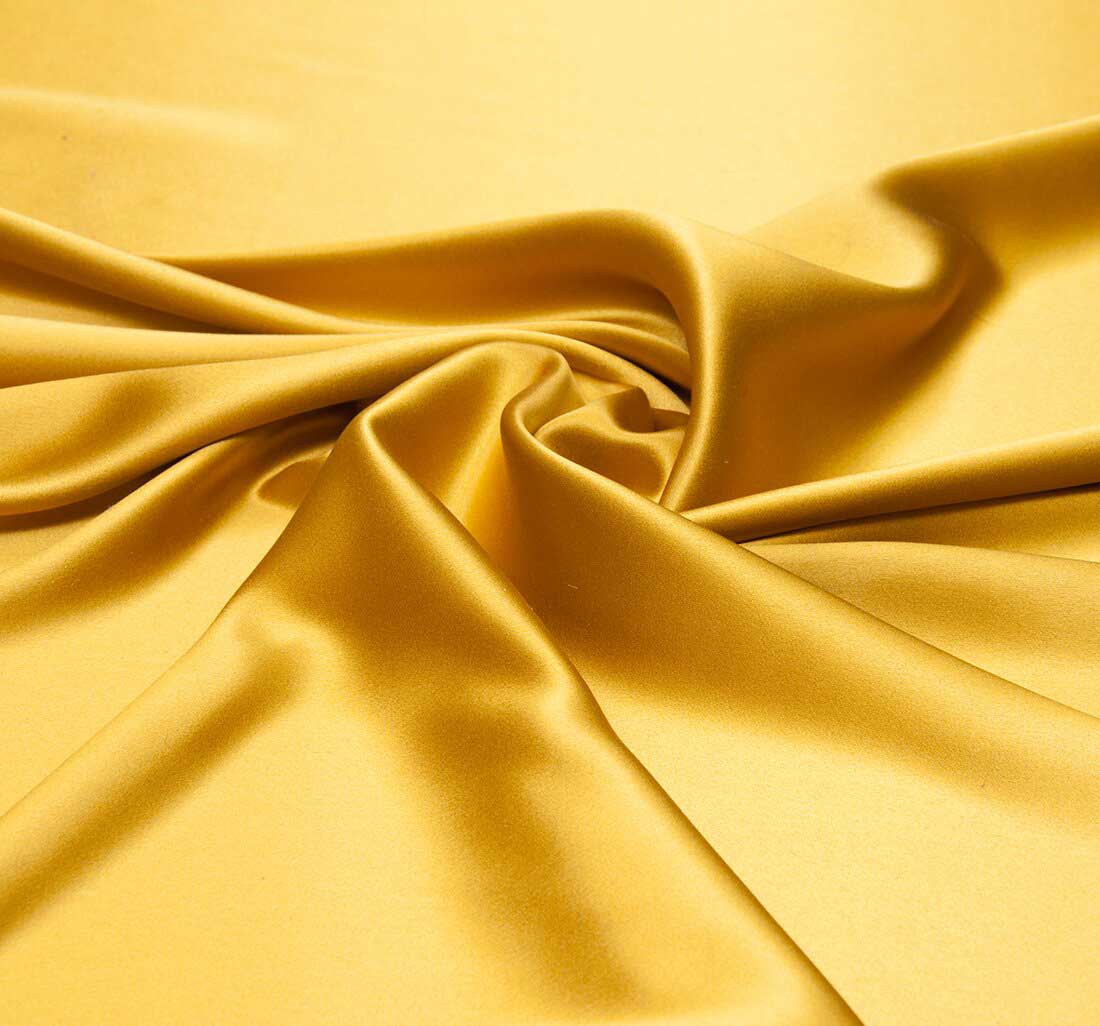
.jpg)
.jpg)
.jpg)
.jpg)
